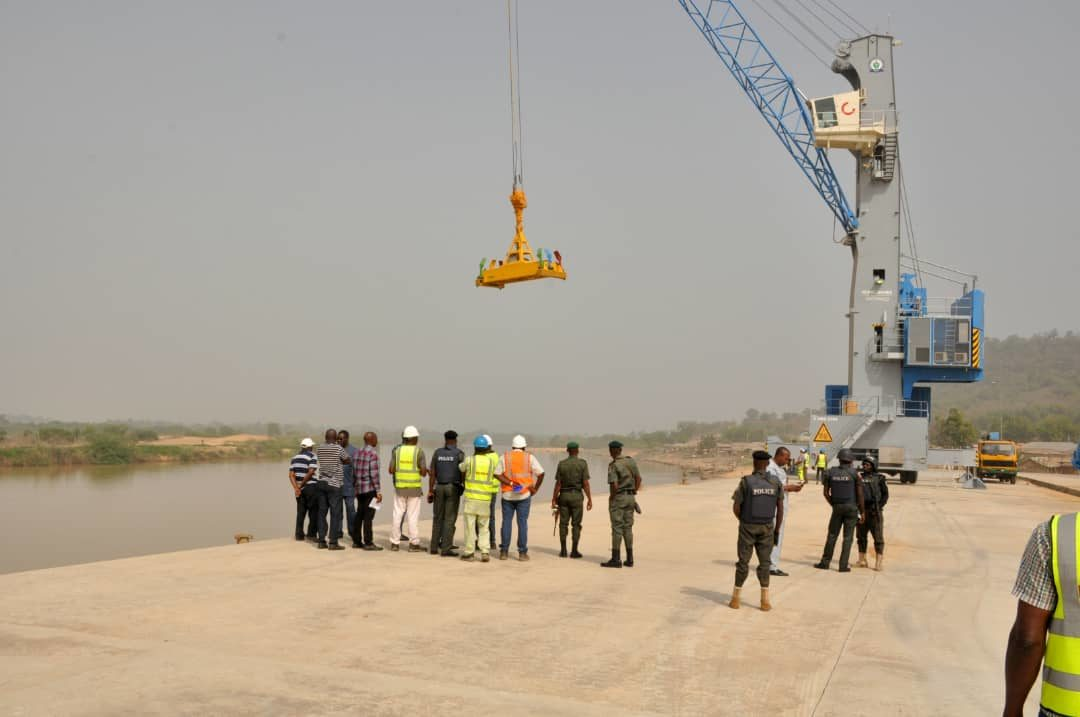In the last one month, the hopes and aspirations of Nigerians and mainly shipping stakeholders have been raised with the commissioning of Baro River Port in Kogi State and the concessioning of Onitsha River Port in Anambra State.
However, checks by Business Hilights showed that both ports may continue to remain useless unless the 2.5 metres minimum draught required for viable inland navigation is met and only re-dredging can lead to that.
Analysts say granted the fact that the federal government is fully aware of the demands of not less than 2.5 metres minimum draught for inland navigation to be possible before commissioning Baro and concessioning Onitsha, it means that both efforts are programmed to fail upon huge costs on the merger coffers of the country now.
Statistics on Onitsha Port show that on August 30, 2012, President Goodluck Jonathan had commissioned it nearly 30 years after former President Shehu Shagari had commissioned the same facility. Within the 29-year period between the two ceremonies, the impressive port was yet to be utilised.
Unfortunately, six years after its second commissioning, it has remained dormant.
Knowing that it will take another round of dredging from Warri to Baro to beat the challenge of minimum draught condition and bearing in mind that there is no budget for that in 2019 budget proposal, President Muhammadu Buhari while flagging off business activities at the Baro Port told Nigerians that the port would enhance intermodal transportation connectivity in the country, reduce pressure from big trucks off the road, and create “huge” employment opportunities for Nigerians, while also decongesting other busy ports.
Earlier in his remarks, the Managing Director of the National Inland Waterways Authority (NIWA), Olorunnimbe Mamora, said the new river port is a veritable outlet to ensure seamless transportation of goods, services and passengers in the country, while also creating an intermodal transportation system and facilitating socio-cultural relationship, commerce, trade, and agricultural development.
Baro River Port was reconstructed with N6bn by Chinese firm – CGCC Global Project Nigeria Limited without any budgetary allocation for access roads both from Niger State and host Kogi State.
It was on record that both Mr. President and all other dignitaries at the commissioning accessed the port via the air as the available access road had remained unmotorable.

Experts say with a draught of between 2.5 and 3.0 metres, inland waterways cannot accommodate big vessels that move on minimum draft of 8.5 metres. Consequently, mother vessels entering the country must first trans-load to smaller vessels which then will convey the goods through the inland channels to the river ports. The standard procedure is that mother vessels that are designed for a draught of between 8.5 and 10.5 metres ferry goods into the country and thereafter transfer the goods to barges, which in turn trans-load to smaller boats that can move on inland waterways and berth in inland ports.
A clear challenge bedeviling both Onitsha and Baro ports which government seemed to have decided to overlook is that due to River Niger’s high rate of siltation, its depth is considerably below the 2.5 metres minimum draught required for safe navigation.
The impact of silt on the river is such that some areas are almost completely clogged up with a sprinkle of habitable islands having sprung up on the route that should have been deep enough to accommodate vessels capable of carrying some containers.
Inland maritime experts say to ensure all-season navigation on the River Niger, the federal government must undertake expensive capital dredging to achieve the required draught while regular maintenance dredging to sustain the navigable draught is imperative.









